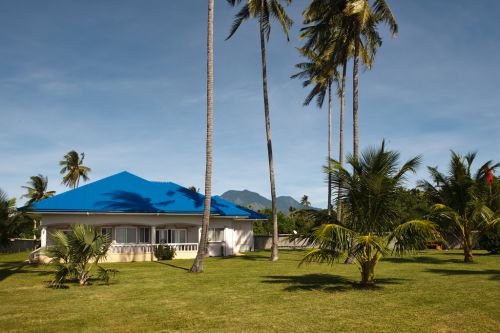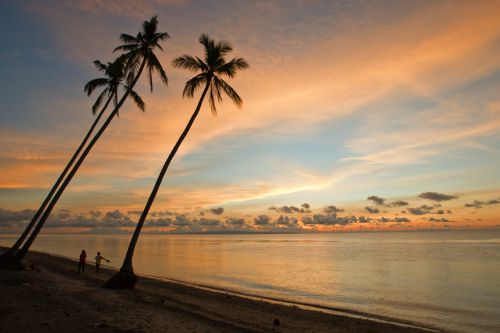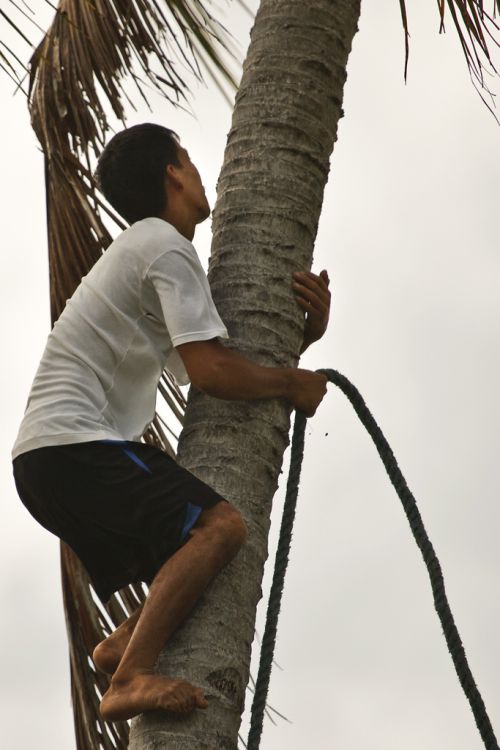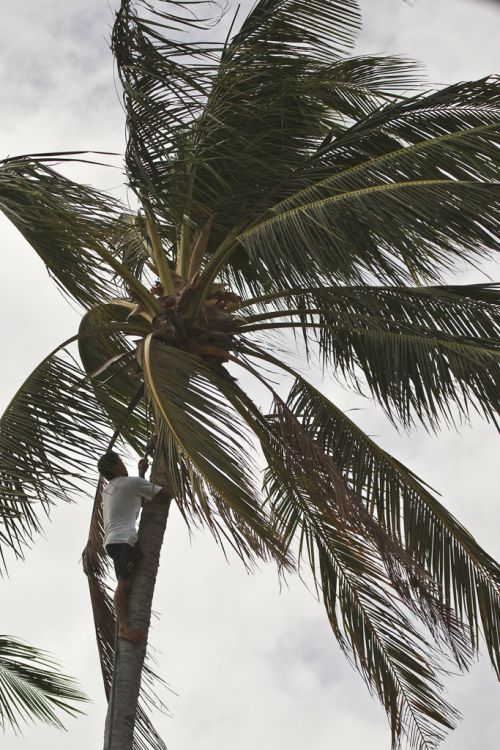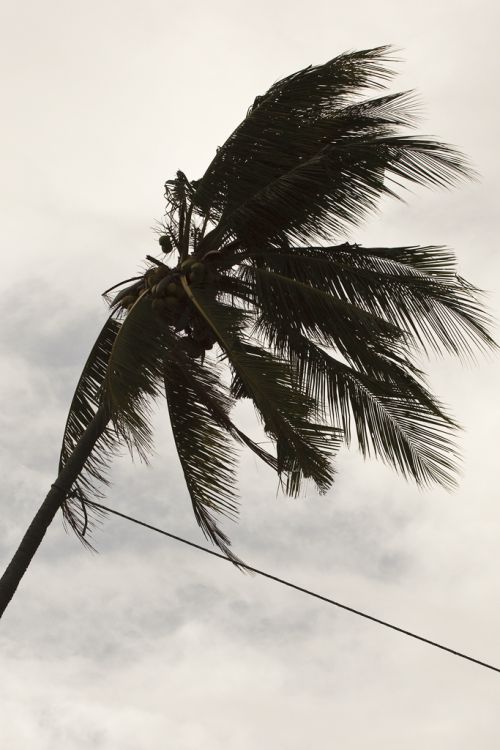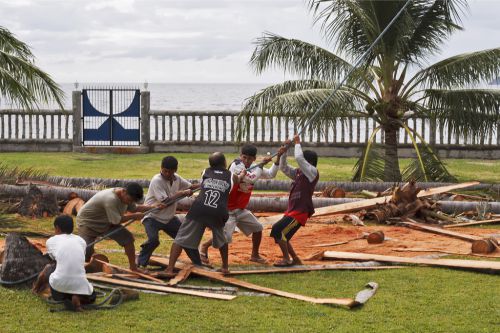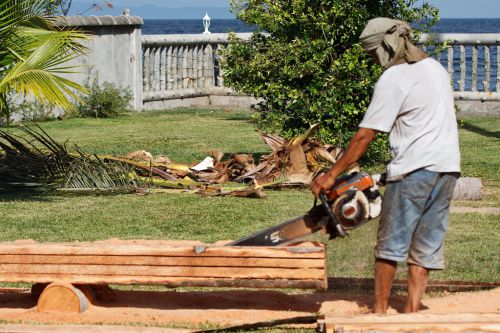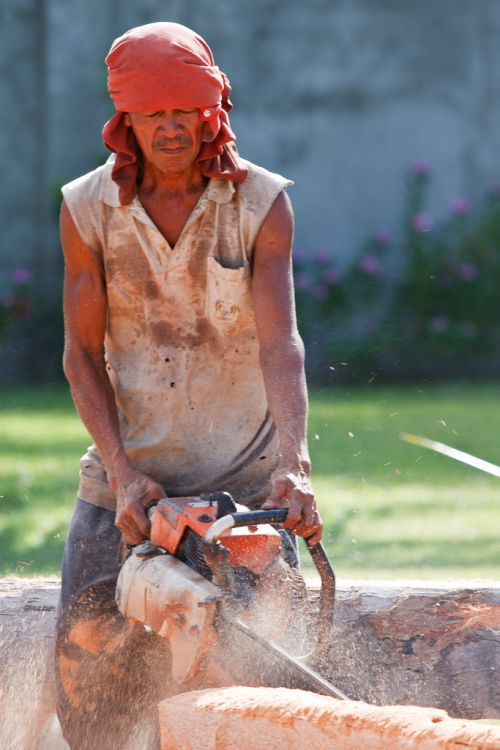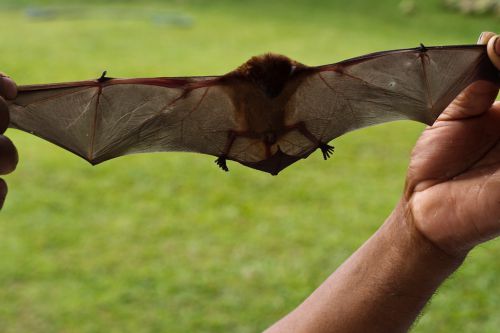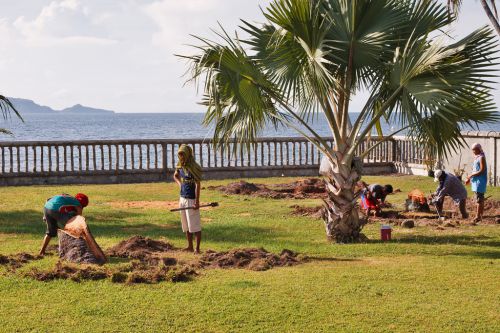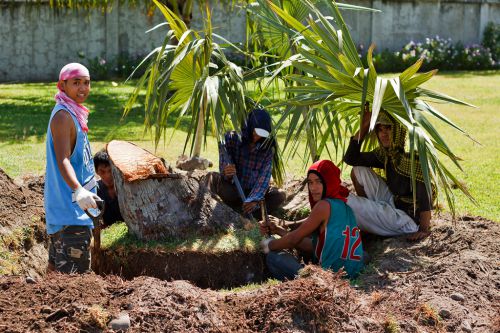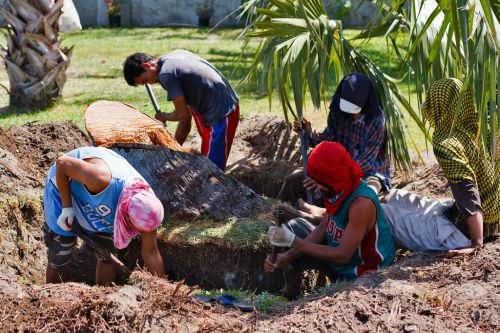March 2011, from 23 to 25: Felling of coconut trees
In April 2003 when I made the purchase of our land of Mag-abo, it was still a coconut plantation with 80 coconut trees. When it came time to build the house I was obliged to have them cut down for the most part. For that I had to get a permit from the administration as it is true that here this tree is a national asset which preservation is not taken lightly. The Philippines is the second largest producer after Indonesia.
(Our Mag-abo beach lot in April 2003)
I am a lover of trees especially when they are over 50 years old therefore I cut what was strictly necessary until the first incident occurs.
One morning when I arrived on site, the foreman awaited me to show what his workers and Nora, the wife of my future house keeper, had escaped. Indeed a high tree had fallen just short of the workers during their break while Nora was cooking some food for them.
Its wood is very dense and heavy and what was incident could have been a serious accident. In fact this coconut that looked to be in good health was gnawed at the base by termites to the point that his feet looked like the tip of a pencil.
This gave me to think about and I decided of keeping only 11 trees for exotic decor. Three were on the beach and eight within the garden not leaning toward the house.
When the construction was completed, I made them clean twice a year by removing the bad branches and young coconuts.
(Our house and garden and the coconut trees)
There are no statistics, but there are many serious accidents every year in the Philippines by falling coconuts. Imagine the damage that may cause on our skull these fruits of 2 to 4 kilos sometimes falling from a height of 25 meters. It is partly to offset this risk that we observed on many coconut trunks these kinds of collars made of galvanized metal that prevents rats from climbing, and gnawing at the nuts that fall.
It is better to forget this phrase as "sleeping under the coconut trees" because it can be dangerous.
So I was left with eleven coconut trees in until 2010 until one of three on the beach was uprooted by the sea
Early 2011 we received a text message from our house keeper Dodong telling us that the two trees left on the beach had also been uprooted by strong wind combined with very high tide.
(The three trees on the beach)
Nowadays extreme weather events happen more frequently and scientists can discuss the many reasons endlessly, people like my neighbors who live by the sea and has always been notice it with the rising of the sea level as well.
I had to face the facts that one day the remaining coconut trees may fall on the house causing, at best, huge damages.
So just back it was the first thing it was the first thing I had to deal with and the photos that follow illustrate the end of my beloved trees.
In their place we will plant dwarf coconut trees as we already have in the garden but the huge roots should be uprooted with only as tools of crowbars and shovels.
Finally we should bring in topsoil to fill the holes.
The cutting down of the trees:
First someone has to climb to tie a rope at the top of the tree for later guiding its fall.
Then they cut down the trees with a chain saw.
Then they pull the cord to make it fall at the right place.
Finally they saw them up into planks on the site.
An innocent victim which was sleeping in the trees. we tried to save this bat but in vain.
Now only the roots have to be removed.
Below, they take shelter from the sun under palm tree branches.
And finally to plant dwarf coconut trees like this one.
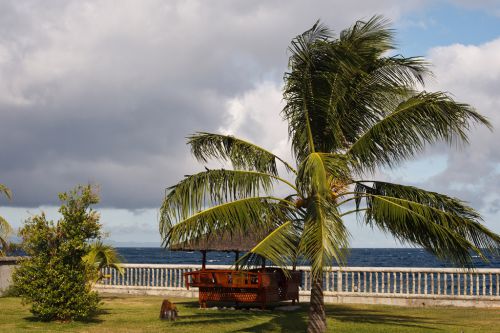
A découvrir aussi
- Letter 1. Luisa, update of February 21, 2008
- March 2009, Cebu city, the Pearl of the South.
- May 2011: A quiet month with a few road trips with my 4-wheel drive
Inscrivez-vous au blog
Soyez prévenu par email des prochaines mises à jour
Rejoignez les 21 autres membres


